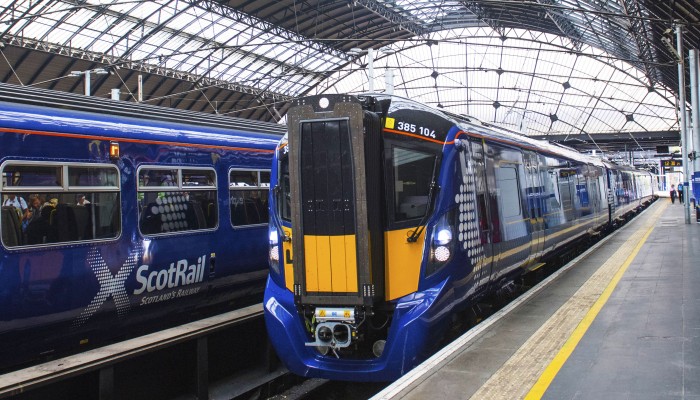More than one-quarter of trains have been suddenly axed by nationalised ScotRail, owing to worsening industrial relations that has resulted in a driver shortage with fewer drivers volunteering to work on their days off.
“We want to resolve the pay dispute and remain fully committed to further discussions,” ScotRail Service Delivery Director Mark Ilderton told RAIL.
More than one-quarter of trains have been suddenly axed by nationalised ScotRail, owing to worsening industrial relations that has resulted in a driver shortage with fewer drivers volunteering to work on their days off.
“We want to resolve the pay dispute and remain fully committed to further discussions,” ScotRail Service Delivery Director Mark Ilderton told RAIL.
ScotRail (and the state-owned Caledonian Sleeper) is facing industrial action by all its staff, after a formal pay offer made on July 5 was rejected by all four rail trade unions - ASLEF, RMT, TSSA, and Unite.
ASLEF and the RMT have said that they are to ballot their members on industrial action, up to and including strikes.
There is no suggestion that the lack of volunteers for overtime is being co-ordinated by unions. Sources say it simply reflects the level of staff dissatisfaction.
Details of the pay offer have not been revealed, but in a statement ScotRail said it was “in line with the Scottish Government’s public sector pay policy”.
For 2024-25, the government’s official pay policy is 2% for April to December, plus a further 1% from January 2025. This would be the same each year if a multi-year deal (for two or three years) was made.
Describing the offer as “well below inflation and derisory”, RMT General Secretary Mick Lynch said the “insulting pay offers have been made even more unpalatable when members of the Scottish Parliament received a 6.7% pay rise this year”.
An emergency timetable was announced on July 9 and introduced the following morning, with 640 fewer services on Mondays-Fridays. Peak services are bearing the brunt, with frequencies typically being halved. First and last trains each day are unaffected.
Some 72% of normal services are running (1,660 trains a day, compared with 2,300 normally), with peak services halved in frequency. There is no indication of how long the emergency timetable will be in operation.
Seeking to put a positive spin on the news, ScotRail said that this year’s emergency timetable has “200 more services and 515,000 seats each day than the one introduced in 2022, when there was similar disruption”.
It addresses a growing problem of fewer drivers volunteering for overtime. This is principally rest-day working, on which ScotRail relies. Unions say ScotRail should employ more drivers, rather than relying on overtime to fill shortfalls.
It takes about 18 months to train a new driver, and costs the operator around £65,000.
The state-run operator counters this by saying it is recruiting 160 new drivers each year. However, with an ageing workforce, many will simply replace those retiring or leaving driving roles.
Announcing the new reduced timetable on July 9, ScotRail said the cuts will mean its service will be “more reliable by reducing the number of short-notice cancellations”.
Full refunds are available to passengers for pre-booked journeys affected by the timetable. Alternatively, they can travel on another service, or up to a day before or two days after their planned journey.
ScotRail said it “remains fully committed to further talks to reach agreement on a pay offer that delivers value for the taxpayer and a fair pay increase for ScotRail employees”.
The position presents a further problem for the embattled Scottish Government, which nationalised ScotRail on April 1 2022 and is now responsible for setting its overall budget.
As a state-owned company, all staff are covered by the government’s public sector pay restraints.
Login to continue reading
Or register with RAIL to keep up-to-date with the latest news, insight and opinion.



















Login to comment
Comments
No comments have been made yet.